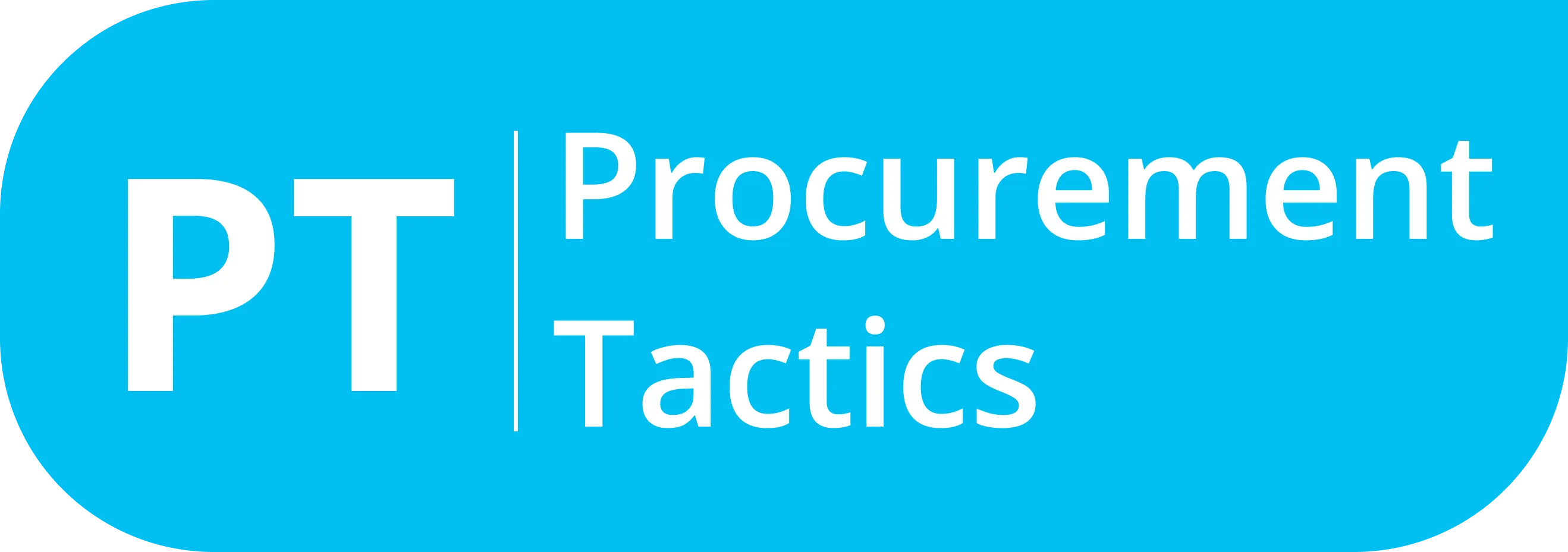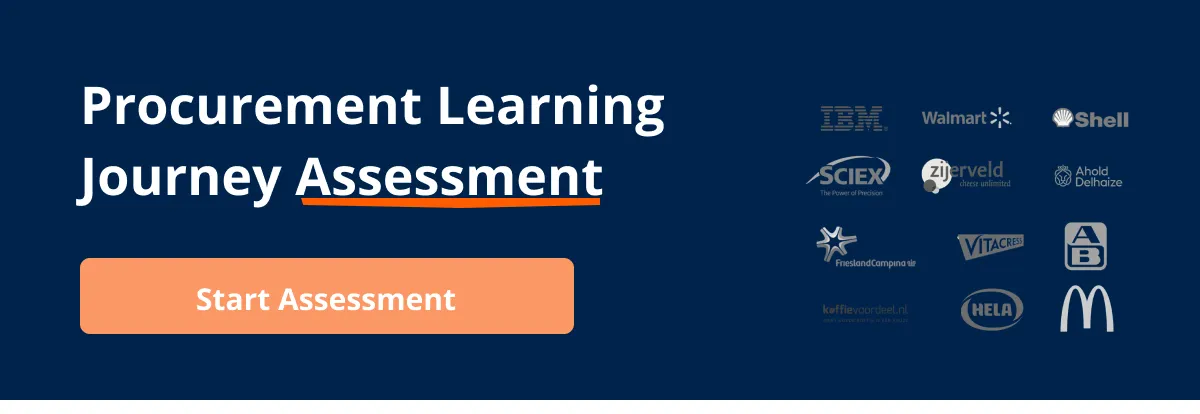Written by Marijn Overvest | Reviewed by Sjoerd Goedhart | Fact Checked by Ruud Emonds | Our editorial policy
Public Procurement — The Ultimate Strategy for 2024
Key takeaways
- Public procurement is the acquisition of goods, services, and work on behalf of the government.
- In public procurement, the government has branches deeply involved with acquisition and auditing.
- Public procurement benefits taxpayers by ensuring the efficient use of public funds, fostering competition among businesses, and promoting social and environmental goals.
Have you ever wondered how governments are able to build roads and complete impressive works of infrastructure? It’s all thanks to public procurement. Also called government procurement, public procurement is, simply put, the procurement of goods, services, and work on behalf of the government or a public authority.
For today’s article, we are going to discuss how governments from all over the world handle public procurement. We are also going to learn the best strategy for public procurement.
After reading this article, you should already have an idea of how public procurement works and how you, the procurement manager, can take advantage of this.
HowPublic Procurement Works
Public procurement works just like any other procurement process. The government or the person of authority who needs the supplies and/or services determines who is the best source for the supplies or services.
Then, there are negotiations involved on the matter of how many products to buy, how the services are accrued, and the method of payment. These small pieces of information are dealt with between the supplier and the government or person of authority.
Once the details are set, contracts and receipts are signed and collected until the day arrives for the supplier to bring in the goods or services needed.
At the end of the procurement process, there is also an audit involved. The key difference with public procurement is that the government always has branches that are deeply involved with both procurement and auditing.
The government’s auditing bureau or department is the key branch that is usually involved in the checking and auditing of the budget used for procurement. The treasury department is the branch of the government that gives the budget, as approved by the person of authority.
The Public Procurement System
Depending on which branch of the government requires the procurement of supplies or services, public procurement works just like with any company purchasing. There are steps that should be taken and considered carefully:
- Create clear requirements in a work statement for the product or service that you are procuring.
- Develop and approve the Request for Proposal while following the RFP standards of getting great proposals and reducing the risk.
- Identify prospective vendors
- Respond to vendor questions
- Receive, evaluate, and score proposals
- Down-select vendors and conduct interviews and demos
- Create scoring workbooks for proposal evaluation
- Perform pre-contract risk assessment and due diligence on the finalist supplier
- Negotiate and award the contract
The procurement process, of course, should be done efficiently because unlike private companies, the government is using hard-earned taxpayer’s money for the procurement of products and/or services.
Therefore, the department handling the whole purchasing process should make sure that the supplies are in good condition and that the supplies are paid for at a good price. This is why most public procurements often start with the bidding of different prospect suppliers.
The Differences Between Commercial Procurement and Public Procurement
Here are some key differences between Commercial Procurement and Public Procurement that you should know about.

1. Budget
Considering public procurement is typically driven by government entities, there are limitations to the flexibility in their spending and methods of funding.
It is more typical for the public sector’s limitations to arise in the sense of earmarked money. Meaning, that public procurement budgets are more likely to be delegated preemptively and tougher to alter their course of distribution.
As for the private sector, there is much more room for flexibility and agility within budgeting.
This makes it easier to procure goods and services based on price and competitiveness. Considering there is an underlying focus on procuring to better top-line value, in private procurement, there is a need for room to wiggle. Otherwise, it would be a real pain in the behind to keep up with competitors.
2. Motivation
Private procurement is typically in FP (for-profit) organizations, while public procurement functions to support NFP’s (not-for-profit).
3. Regulations
For public procurement, there are regulations to follow. Constraints, caused by regulations, create less room for creative procurement methods. Spend is mandated by governments for the government.
Meanwhile, private procurement is more creative. Private entities don’t answer to the scrutiny of government bodies, but rather march to the beat of board members, owners, and shareholders. This makes for a procurement strategy focused on the contentment of private persons rather than government bodies.
4. Funding
Private companies can easily transfer money from one department to another if business conditions end up changing. In the event that prices increase, or another supplier reduces prices, public organizations face a much longer process to change their budgets.
If a government department decides to reduce funding to a certain area of the public sector then things can change overnight, putting undue pressure on procurement teams in a short amount of time.
5. Management Styles
In public sector management, which tends to be heavy on procedure and bureaucracy, procurement is less efficient when compared with the private sector.
In this sector, the procurement manager answers to the CEO and a board of directors who then have the final say on what choices should be made.
The Risks and Solutionsand Public Procurement
As mentioned earlier, public procurement is the process where the government buys supplies and/or services for different government projects. Given the nature of the whole transaction, there is always a huge degree of trust, confidence, and responsibility given to the branch that handles the procurement. Perhaps one of the biggest risks of public procurement is the rampant corruption that happens during the process.
Whether it’s getting the supplies at botched prices (either too expensive or too cheap), the materials taken came from inferior suppliers, the materials themselves are inferior, or the bidding or contract is given to a good friend or relative of the person in authority, public procurement can be easily cheated on and manipulated. This is the reason why there is now a demand for governments all over the world to start investing in IT procurement in order to avoid the problems mentioned above.
With IT procurement software, there is accountability for each step in the procurement process. Using a good procurement system and reliable people working in the public procurement team, there is little chance for corruption during the whole public procurement process. Of course, a system is only as good as the people who developed it. Government procurement teams should find and invest in the best procurement software.
Investing in the Procurement Team
Apart from getting a working procurement system, one can also invest in the people working in the procurement team. It’s always a good idea to brainstorm ideas. Some of the steps that they can take may involve any of the following:
- Assign an owner whose job is to maintain and continually refresh your procurement procedures, policies, and documents.
- Identify the roles and responsibilities of each member of your procurement team to avoid confusion.
- Choose people who can help in interpreting and resolving problems.
- Reference forms, templates, checklists, and other tools that the staff can use
- Create policy statements that specifically address the rule, and procedures that direct the implementation of activities.
- Develop procedures that offer employee options, when needed, as some procedures are unnecessarily restrictive and may not be of use.
- Use clear and simple instructions that your procurement team can understand.
Better yet, the government can also train its procurement managers to become the best in procurement. Training, such as our Negotiation Course For Procurement Professionals is a great start!
Conclusion
Public procurement is a pivotal mechanism through which governments acquire goods, services, and works. This article delves into the intricacies of how public procurement works, shedding light on the processes involved and highlighting the differences between public and commercial procurement.
Understanding the strategies and risks associated with public procurement is crucial for procurement managers, ensuring the effective and responsible use of taxpayer money.
Frequentlyasked questions
What is the primary goal of public procurement?
The primary goal of public procurement is to facilitate the acquisition of goods, services, and works on behalf of the government or a public authority. This process ensures that the government obtains the necessary resources to fulfill its functions and responsibilities.
How does public procurement differ from commercial procurement?
Public procurement and commercial procurement differ in several key aspects. Public procurement is driven by government entities and operates within more stringent budget constraints, often with earmarked funds.
What role does IT procurement software play in mitigating risks in public procurement?
IT procurement software plays a crucial role in mitigating risks in public procurement, particularly the risk of corruption. By introducing accountability and transparency at every step of the procurement process, the software helps prevent issues such as inflated prices, substandard materials, and biased contract allocation. It also enables efficient budget management and reduces the chances of fraudulent activities.
About the author
My name is Marijn Overvest, I’m the founder of Procurement Tactics. I have a deep passion for procurement, and I’ve upskilled over 200 procurement teams from all over the world. When I’m not working, I love running and cycling.


